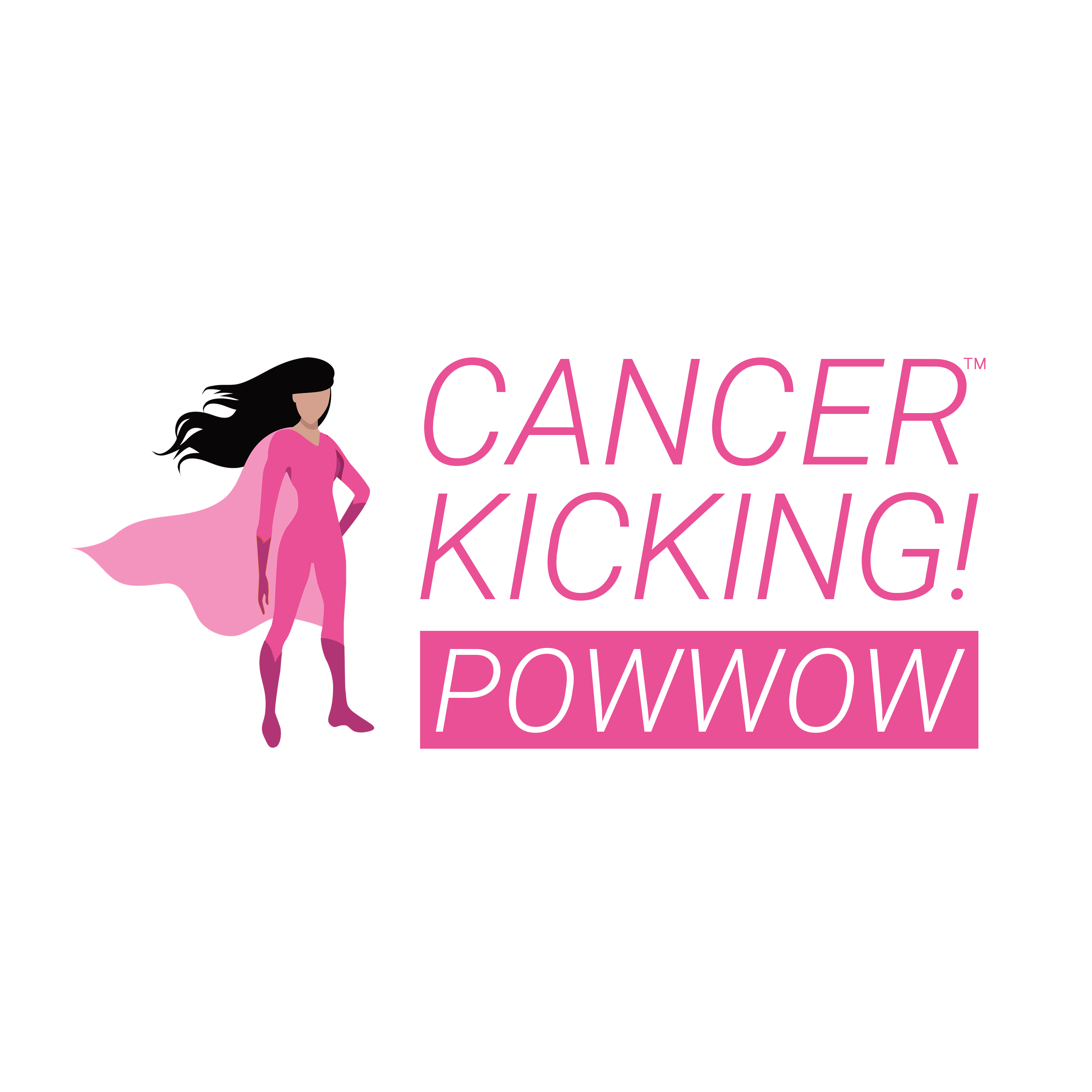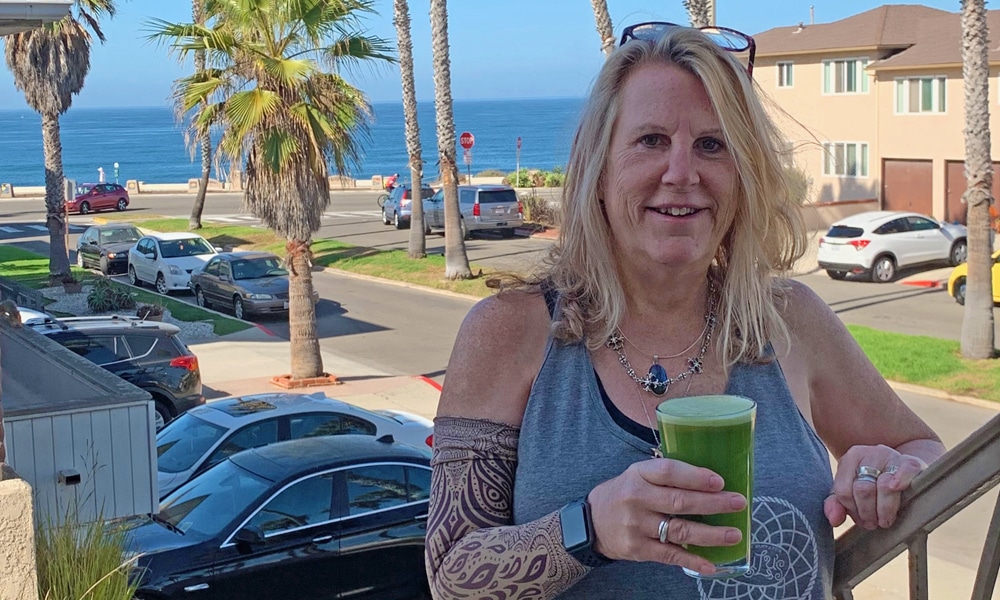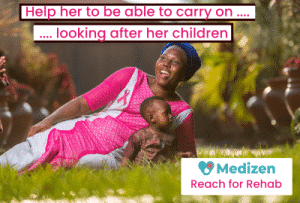Vitamin D has caught the public eye as “the sunshine vitamin” over recent years. While it’s been long studied for its benefits to bone health and lifting mood, ongoing research shows that getting enough vitamin D also offers protective effects against cancer. Here’s what you need to know about vitamin D and cancer, including the key roles it plays in immunity and how to make sure that you get enough.
What is Vitamin D?
Vitamin D is a fat-soluble vitamin, which means it dissolves in fats and oils and needs dietary fat to be best absorbed.1 Fat-soluble vitamins (which also includes vitamins A, E, and K) are stored in and accumulate in your body’s fatty tissues over time, unlike the water-soluble vitamins (vitamin C and the B vitamins), which are lost daily through excretion. Vitamin D is unique among the fat-soluble vitamins in that it’s also considered to be a steroid hormone.
![]()
![]()
![]()
![]()
![]()
![]()
![]()
![]()
![]()
![]()
![]()
![]()
![]()
![]()
![]()
![]()
![]()
![]()
![]()
![]()
![]()
![]()
![]()
![]()
![]()
![]()
![]()
![]()
![]()
![]()
![]()
![]()
![]()
![]()
Getting enough vitamin D is critical to support many bodily functions. Vitamin D promotes calcium absorption in the gut. It also helps maintain the balance of calcium and phosphorus levels in your blood needed to optimize bone health. Vitamin D is imperative for immune function, reduces inflammation, and is relied upon by genes that regulate cellular activity throughout your body.
Vitamin D can be found in certain foods and dietary supplements, but it’s also synthesized by human skin when exposed to direct sunlight. Specifically, UVB radiation triggers vitamin D production from the compound 7-dehydrocholesterol in your skin.2
When vitamin D is absorbed into the bloodstream, your liver and kidneys have to convert it into the biologically active form through a process called hydroxylation. This takes place first in the liver, where vitamin D is converted to the storage form called 25-hydroxyvitamin D, or calcidiol. The second takes place in the kidneys, where 25-hydroxyvitamin D becomes the active steroid hormone form called 1,25-dihydroxyvitamin D, or calcitriol. These processes make vitamin D bioavailable for your body to use.
There are two types of vitamin D:
- Vitamin D2 (ergocalciferol) is synthesized by plants.
- Vitamin D3 (cholecalciferol) is synthesized by animals. It’s also the form produced by human skin when exposed to sunlight.
Over 11 hours of video content are now available to stream from any device. If you cannot attend our annual Summit at Terranea Resort, sign up for the Virtual Summit instead and get the same information from the in-person Summit in the convenience of your own home.
How are Vitamin D and Cancer related?
One of the most fascinating roles of vitamin D in human health is its role in cancer prevention and immunity.3 A growing body of research demonstrates how important achieving and maintaining healthy blood levels of vitamin D can be for reducing the risk for cancer as well as improving cancer outcomes.
Vitamin D levels are typically measured in ng/mL and can be determined by a simple blood draw. Minimum recommended blood levels for general health are usually above 30 ng/mL. However, research indicates that cancer risk is reduced the most when you have blood levels of between 40-80 ng/mL.4
Vitamin D deficiency – or having blood levels below what’s recommended for health – appears to be related to an increased risk for breast cancer.5 This also means that with proper intake and dosing, vitamin D has been found to offer protective effects against breast cancer risk as well as risk of dying from the disease.
Studies have shown that taking at least 800 IU of vitamin D per day reduces breast cancer risk among postmenopausal women by 34%.6 And if you take 2,000 IU of vitamin D and get 12 minutes of direct sun exposure per day, the risk goes down by a staggering 50%.7 What’s more, after being diagnosed with breast cancer, maintaining adequate vitamin D levels cuts the death rate from the disease in half.
Stay Connected
Stay Connected
A 2012 study published in Carcinogenesis found that having high levels of vitamin D at early breast cancer diagnosis was associated with smaller tumor size, better overall survival, and and better breast cancer-specific health outcomes, especially among postmenopausal women.8 This correlation was also observed in a 2014 meta-analysis of five studies, finding that high levels of vitamin D were associated with lower mortality from breast cancer.4
What’s the bottom line? The fact is that over three-quarters of cancer thrivers aren’t getting enough vitamin D, and evidence shows that this plays a major role in health outcomes.9 In addition to nourishing your body with a whole foods, plant-rich diet, participating in regular physical activity, and enjoying things that feed the mind and soul, be sure to get yourself some vitamin D-fortified foods, supplements, and sunshine to minimize cancer risk and improve cancer outcomes.
Factors that influence Vitamin D Status
Research suggests that if we all got enough direct sunlight exposure on unprotected skin (no sunscreen), our bodies could likely produce all of the vitamin D we need.10 However, that’s not the case for most of us today.
As a result, vitamin D deficiency is very common, especially in certain populations, affecting an estimated 1 billion people globally and over 40% of people in the United States alone.11,12 This increases the risk for weak muscles, softened bones, and of course reduced immune function that can leave us more susceptible for conditions like cancer and heart disease.13-15
The good news is that understanding what factors can influence vitamin D status, and specifically, which make it more difficult to maintain optimal levels, you can make some changes to ensure that you get enough.
The factors below have been associated with a higher risk for having low vitamin D levels:16
- Having a darker skin pigmentation
- Being over age 65
- Smoking
- Having pre-existing health conditions like diabetes, cancer, or high cholesterol
- Spending less than thirty minutes per day in direct sunlight most days
- Being obese, or having a BMI of 30 or higher
- Living anywhere north of 40 degrees latitude (e.g., Barcelona, New York, Budapest, Rome, Toronto, Zurich, Munich, Paris, Vienna) or south of 40 degrees latitude (e.g., Buenos Aires, Cape Town, Sydney, Queenstown)
- Having a malabsorptive condition or having had a procedure that can cause fat malabsorption, like gastric bypass surgery
If any of these factors apply to you, don’t worry – there are things you can do to make sure you’re getting enough vitamin D.
When the sun is shining, get outside for between 15-30 minutes per day to expose your hands, arms, and legs to sunlight without sunscreen. You should protect your face with sunscreen, however, as facial skin is thinner and more delicate than the skin on your trunk and extremities. Just be cautious not to overdo it, as excessive sun exposure increases your risk for sunburn and, ultimately, risk for developing skin cancer.17 Once you get your dose of D, apply sunscreen or sun-protective clothing if you’re staying outside.
Keeping vitamin D levels between 40-80 ng/mL often requires a daily intake of 5,000 IU or more. To get a baseline idea of where you are, get your vitamin D blood level checked at your next doctor’s visit. Depending on what your levels are, your doctor or dietitian will be able to guide you on how to optimize your vitamin D strategy if needed.
How Much Vitamin D do I Need?
To achieve and maintain normal vitamin D levels, make a point to enjoy the sun responsibly, eat vitamin D-rich foods regularly, and take a daily vitamin D supplement.
How much vitamin D should you be getting to keep your blood levels within recommended parameters?
The recommended dietary allowances (RDA) of vitamin D for adults are as follows:18
19-50 years: 600 IU (15 mcg)
51-70 years: 600 IU (15 mcg)
>70 years: 800 IU (20 mcg)
In the months when the sun doesn’t shine, Dr. Funk recommends taking 4,000 IU of vitamin D per day, especially for those living north or south of 40 degrees latitude.
Because vitamin D is a fat-soluble vitamin and accumulates in body tissue over time, it’s important not to consume excessive amounts. Taking too much vitamin D in amounts above the tolerable upper intake level (UL) could eventually lead to a condition called hypervitaminosis D, or vitamin D toxicity. This can increase the risk for negative health consequences like hypercalcemia, or excessive amounts of calcium in your blood. This can lead to overcalcification of your bones, tissues, kidneys, and heart, and lead to high blood pressure.
"*" indicates required fields We’ve been working hard on this. Add your e-mail address and we will tell you as soon as it launches.
We’ve been working hard on this. Add your e-mail address and we will tell you as soon as it launches.
Still, vitamin D toxicity is rare for most people. The UL for vitamin D is 4,000 IU (100 mcg) per day for adults ages 19 and over.18,19 However, research using self-reporting health questionnaires and vitamin D blood tests has found that even intakes of up to 40,000 IU of vitamin D supplementation daily, for potentially up to five years, are unlikely to result in toxicity.20
Best Sources of Vitamin D
Very few foods naturally contain vitamin D. In fact, the major natural food sources are egg yolks and fatty fish, like salmon, herring, sardines, canned tuna, and cod liver oil.
Vitamin D fortification – or the addition of vitamin D to foods that don’t naturally contain it – is much more common. Some of the most common fortified foods include orange juice, dairy and plant-based milks, tofu, cereal, and oatmeal.
More recently, manufacturers have created vitamin D-rich mushrooms made by growing them with ultraviolet radiation. Interestingly, mushrooms synthesize vitamin D when exposed to UV rays, much like we do. The only difference is that mushrooms produce vitamin D2, or ergocalciferol, not vitamin D3 like animals and humans. Still, UV-treated mushrooms can contain up to 130–450 IU of vitamin D in just 3.5 ounces.21,22
Over 11 hours of video content are now available to stream from any device. If you cannot attend our annual Summit at Terranea Resort, sign up for the Virtual Summit instead and get the same information from the in-person Summit in the convenience of your own home.
While incorporating vitamin D-rich foods into your diet can be beneficial, they can also be inconsistent sources, which could be problematic if your levels tend to be low or you have a diagnosed vitamin D deficiency. A more reliable option is to take a vitamin D supplement year-round, adjusting as needed during seasons with less sunlight.
Vitamin D Supplementation
Vitamin D supplements are a widely accessible and effective way to ensure you’re getting enough of this important micronutrient. If you choose to take a vitamin D supplement, you can find them in either type mentioned above, vitamin D2 or D3.
Which form should you take? While both have the ability to raise serum blood levels, vitamin D3 appears to be consistently more effective in doing so, and therefore is recommended for the best results.23,24 For instance, a 2008 study published in the Journal of Endocrinology and Metabolismfound that vitamin D3 was nearly twice as efficacious as raising serum vitamin D levels in postmenopausal women with vitamin D deficiency than vitamin D2, even with one single megadose.25
Furthermore, some studies suggest that vitamin D2 is subject to breakdown, more sensitive to humidity and changing temperatures, and lower quality than vitamin D3 by the time it gets to consumers as well as over time in storage.26
Most vitamin D3 supplements are obtained from a secretion found in sheep’s wool, called lanolin. This is similar to sebum, the oil secreted by sebaceous glands in human skin. If you prefer a plant-based supplement, vegan D3 made from lichen – an organism that arises from fungi and algae – is also available.
You can either take individual vitamin D supplements or find a daily multivitamin that contains vitamin D, like the Multi Must Have from Pink Lotus Elements, which contains 1,000 IU (25 mcg) of vegan-friendly cholecalciferol per serving.
Vitamin D is critical for health and may play an enormous role in protection against cancer. Fortunately, getting enough vitamin D can be done through adequate sun exposure and appropriate supplementation.
References
- Grossmann RE, Tangpricha V. Evaluation of vehicle substances on vitamin D bioavailability: a systematic review. Mol Nutr Food Res. 2010;54(8):1055‐1061.
- Alshahrani F, Aljohani N. Vitamin D: deficiency, sufficiency and toxicity. Nutrients. 2013;5(9):3605‐3616.
- Prietl B, Treiber G, Pieber TR, Amrein K. Vitamin D and immune function. Nutrients. 2013;5(7):2502‐2521.
- Mohr SB, Gorham ED, Kim J, Hofflich H, Garland CF. Meta-analysis of vitamin D sufficiency for improving survival of patients with breast cancer. Anticancer Res. 2014;34(3):1163‐1166.
- Shaukat N, Jaleel F, Moosa FA, Qureshi NA. Association between Vitamin D deficiency and Breast Cancer. Pak J Med Sci. 2017;33(3):645‐649.
- Robien, K., Cutler, G.J. & Lazovich, D. Vitamin D intake and breast cancer risk in postmenopausal women: the Iowa Women’s Health Study. Cancer Causes Control 18, 775–782 (2007).
- Garland CF, Gorham ED, Mohr SB, et al. Vitamin D and prevention of breast cancer: pooled analysis. J Steroid Biochem Mol Biol. 2007;103(3-5):708‐711.
- Hatse S, Lambrechts D, Verstuyf A, et al. Vitamin D status at breast cancer diagnosis: correlation with tumor characteristics, disease outcome, and genetic determinants of vitamin D insufficiency. Carcinogenesis. 2012;33(7):1319‐1326.
- Neuhouser ML, Sorensen B, Hollis BW, et al. Vitamin D insufficiency in a multiethnic cohort of breast cancer survivors. Am J Clin Nutr. 2008;88(1):133‐139.
- Bogh MK, Schmedes AV, Philipsen PA, Thieden E, Wulf HC. Vitamin D production depends on ultraviolet-B dose but not on dose rate: a randomized controlled trial. Exp Dermatol. 2011;20(1):14‐18.
- Atoum M, Alzoughool F. Vitamin D and Breast Cancer: Latest Evidence and Future Steps. Breast Cancer (Auckl). 2017;11:1178223417749816.
- Forrest KY, Stuhldreher WL. Prevalence and correlates of vitamin D deficiency in US adults. Nutr Res. 2011;31(1):48‐54.
- Bhan A, Rao AD, Rao DS. Osteomalacia as a result of vitamin D deficiency. Endocrinol Metab Clin North Am. 2010;39(2).
- Keum N, Giovannucci E. Vitamin D supplements and cancer incidence and mortality: a meta-analysis. Br J Cancer. 2014;111(5):976‐980.
- Wang TJ, Pencina MJ, Booth SL, et al. Vitamin D deficiency and risk of cardiovascular disease. Circulation. 2008;117(4):503‐511.
- Parva NR, Tadepalli S, Singh P, et al. Prevalence of Vitamin D Deficiency and Associated Risk Factors in the US Population (2011-2012). Cureus. 2018;10(6):e2741.
- D’Orazio J, Jarrett S, Amaro-Ortiz A, Scott T. UV radiation and the skin. Int J Mol Sci. 2013;14(6):12222‐12248.
- Vitamin D. Office of Dietary Supplements. Updated 24 March 2020. Available from: https://ods.od.nih.gov/factsheets/VitaminD-HealthProfessional/
- Institute of Medicine (US) Committee to Review Dietary Reference Intakes for Vitamin D and Calcium; Ross AC, Taylor CL, Yaktine AL, et al., editors. Dietary Reference Intakes for Calcium and Vitamin D. Washington (DC): National Academies Press (US); 2011. 6, Tolerable Upper Intake Levels: Calcium and Vitamin D.
- Garland CF, French CB, Baggerly LL, Heaney RP. Vitamin D supplement doses and serum 25-hydroxyvitamin D in the range associated with cancer prevention. Anticancer Res.2011;31(2):607‐611.
- Keegan RJ, Lu Z, Bogusz JM, Williams JE, Holick MF. Photobiology of vitamin D in mushrooms and its bioavailability in humans. Dermatoendocrinol. 2013;5(1):165‐176.
- Simon RR, Borzelleca JF, DeLuca HF, Weaver CM. Safety assessment of the post-harvest treatment of button mushrooms (Agaricus bisporus) using ultraviolet light. Food Chem Toxicol. 2013;56:278‐289.
- Glendenning P, Chew GT, Inderjeeth CA, Taranto M, Fraser WD. Calculated free and bioavailable vitamin D metabolite concentrations in vitamin D-deficient hip fracture patients after supplementation with cholecalciferol and ergocalciferol. Bone. 2013;56(2):271‐275.
- Tripkovic L, Lambert H, Hart K, et al. Comparison of vitamin D2 and vitamin D3 supplementation in raising serum 25-hydroxyvitamin D status: a systematic review and meta-analysis. Am J Clin Nutr. 2012;95(6):1357‐1364.
- Romagnoli E, Mascia ML, Cipriani C, et al. Short and long-term variations in serum calciotropic hormones after a single very large dose of ergocalciferol (vitamin D2) or cholecalciferol (vitamin D3) in the elderly. J Clin Endocrinol Metab. 2008;93(8):3015‐3020.
- Houghton LA, Vieth R. The case against ergocalciferol (vitamin D2) as a vitamin supplement.Am J Clin Nutr. 2006;84(4):694‐697.




























